
The Salton Sea in Southern California used to be a popular tourist destination, but the environment has been decimated through agricultural runoff and natural disasters as the water recedes. Photo taken on April 6. (Photo by Jack Orleans/Cronkite News)
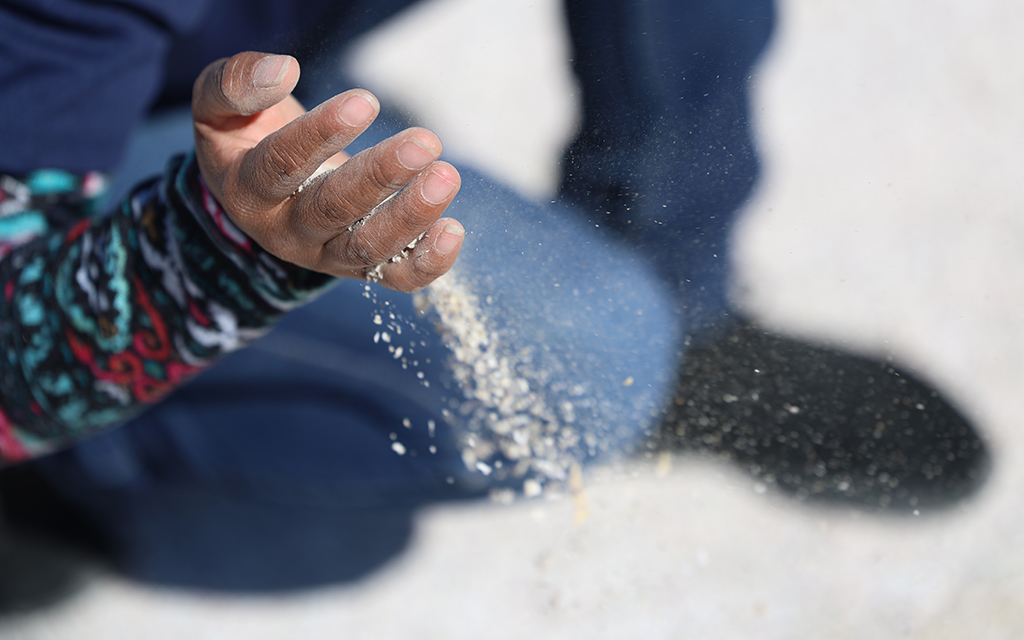
Conchita Pozar demonstrates on April 6 how dust from the desiccated Salton Sea in Southern California gets into the air. (Photo by Jack Orleans/Cronkite News)
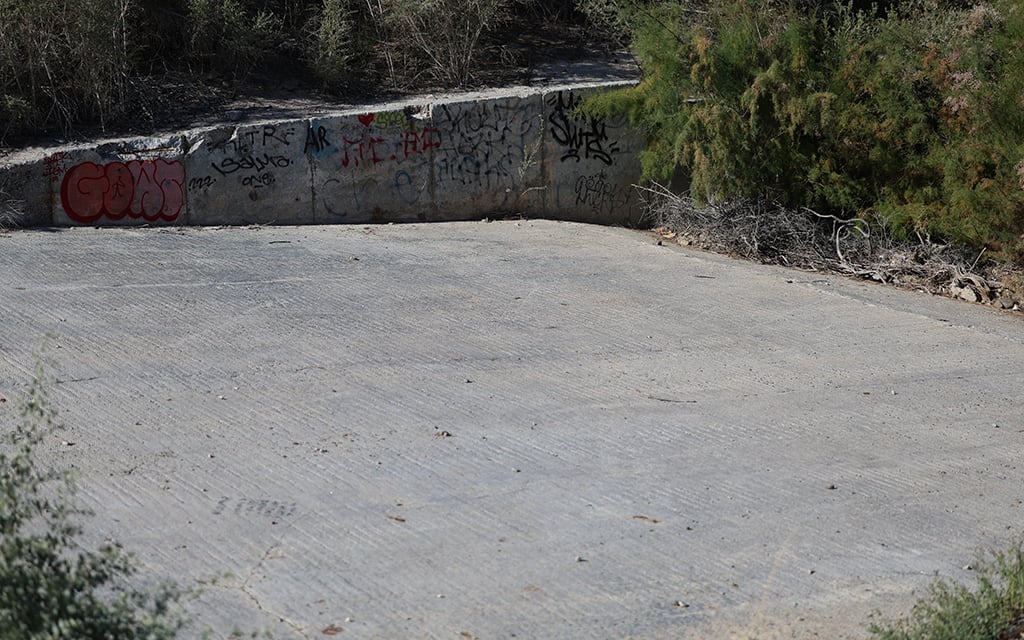
A boat ramp people once used to launch their boats on the Salton Sea in Southern California, is overgrown with shrubs. (Photo by Jack Orleans/Cronkite News)

Farm workers often lack insurance and can’t navigate the healthcare system in North Shore near the Salton Sea in Southern California. Photo taken on April 6. (Photo by Jack Orleans/Cronkite News)

A painting of the Virgin of Guadalupe sits in a shed in Solangel Cruz’s house in North Shore near the Salton Sea in Southern California on April 6. The area is majority Hispanic, and farm workers make up a lot of the labor force. (Photo by Jack Orleans/Cronkite News)

Layla Gibson, a volunteer with the Coachella Valley Free Clinic, teaches people how to assemble makeshift air filters, in Mecca near the Salton Sea in Southern California, on April 6. (Photo by Jack Orleans/Cronkite News)

The fish that were once in the sea ingested toxic runoff from agricultural work sites in North Shore near the Salton Sea in Southern California. Photo taken on April 6. (Photo by Jack Orleans/Cronkite News)

A train passes Solangel Cruz’s house, right up against the Salton Sea in Southern California. Photo taken on April 6. (Photo by Jack Orleans/Cronkite News)
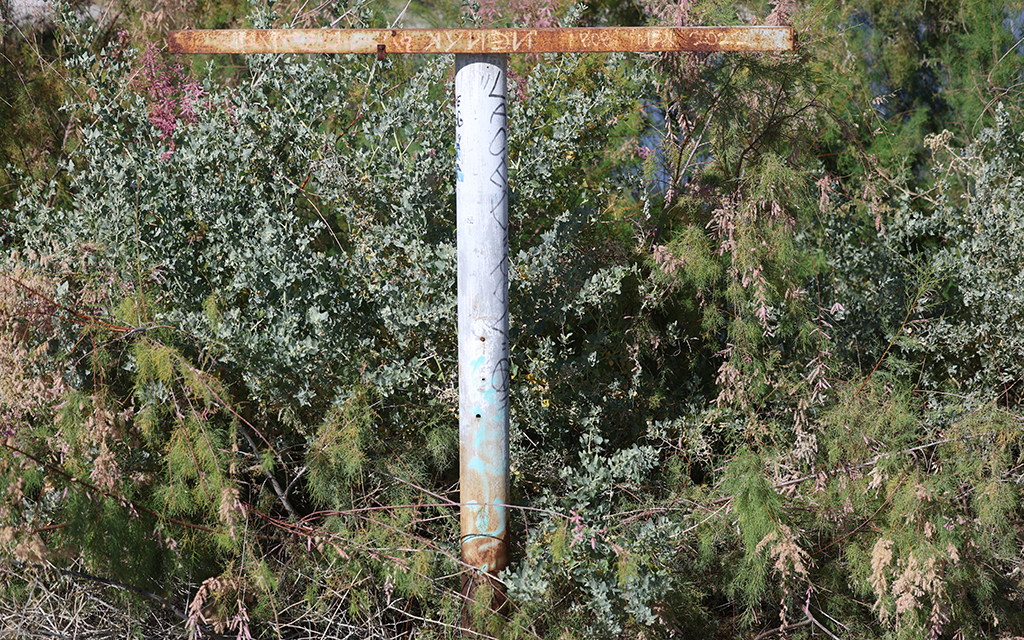
A post where people used to tie their boats, choked with weeds in this April 6 photo because it is so far from the shore as the Salton Sea in Southern California dries up. (Photo by Jack Orleans/Cronkite News)
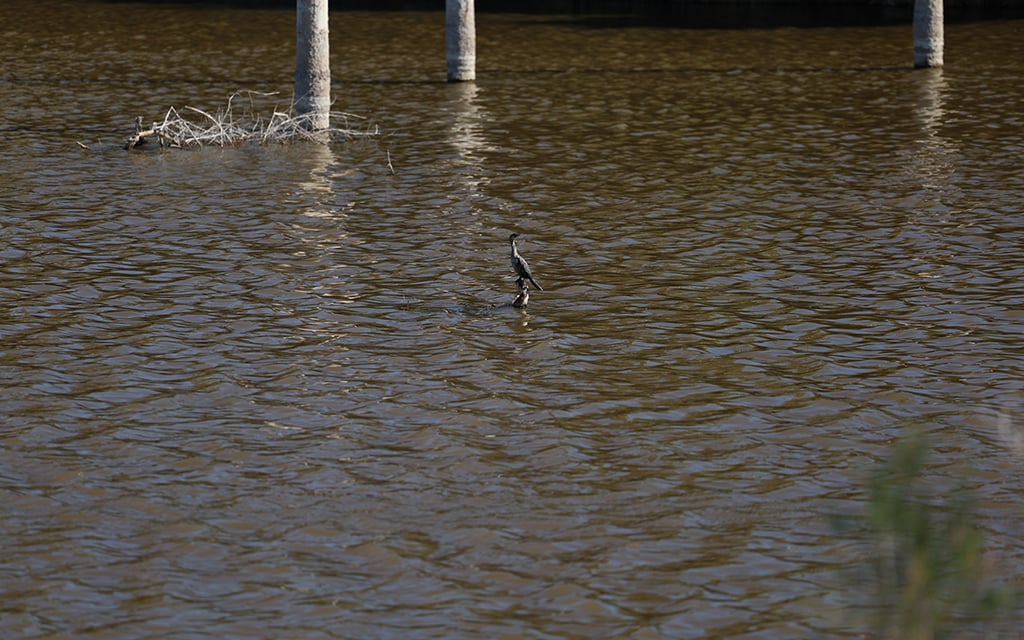
A bird waits for fish, fish that aren’t there anymore, according to a community member and researcher at the Salton Sea in Southern California, on April 6. (Photo by Jack Orleans/Cronkite News)
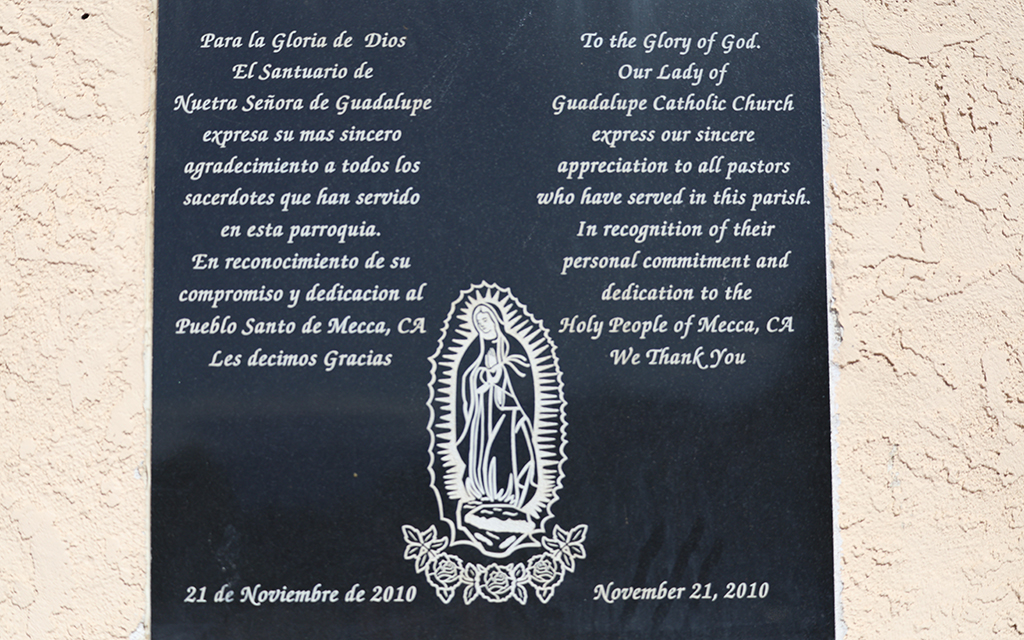
A plaque outside of the church where there was a health fair for the community of Mecca, California, near the Salton Sea, on April 6. (Photo by Jack Orleans/Cronkite News)

The dust, laced with remains of fish that have been contaminated by agricultural chemicals, is responsible for causing respiratory problems in the area near the Salton Sea in Southern California. Photo taken on April 6. (Photo by Jack Orleans/Cronkite News)
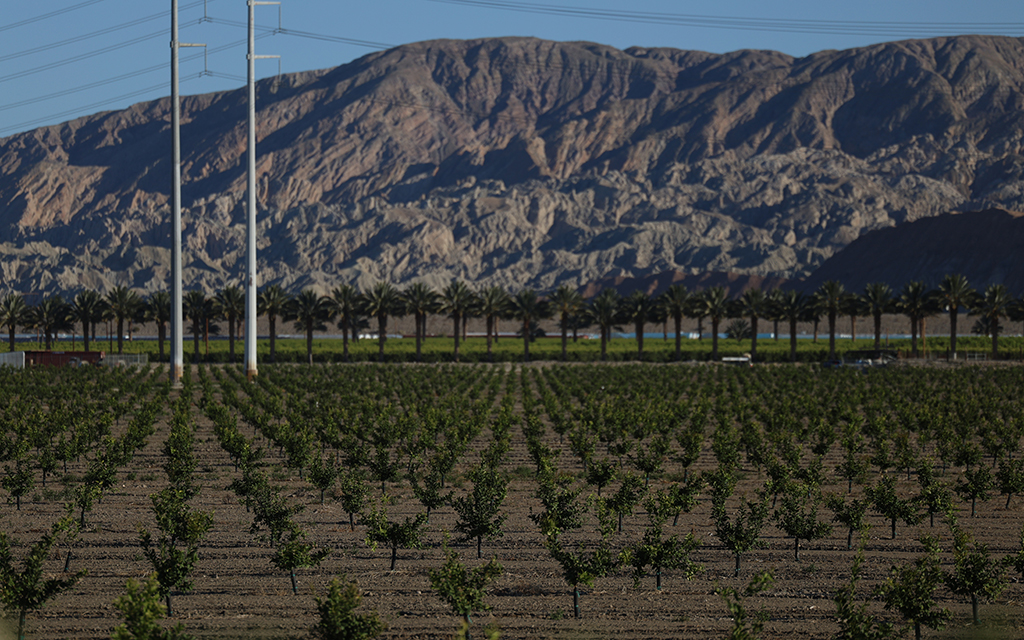
The North Shore area is littered with agricultural work sites near the Salton Sea in Southern California. Photo taken on April 6. (Photo by Jack Orleans/Cronkite News)

A home in the North Shore community of Salton Sea in Southern California where the immigrant community struggles to make ends meet working agricultural and field work jobs, on April 6. (Photo by Jack Orleans/Cronkite News)
NORTH SHORE, California – As it deteriorates, the ecosystem around the Salton Sea in Riverside County in Southern California, has been creating a toxic environment that hurts the health of children of immigrant families who live and work there, according to researchers.
A 2023 study by the University of California, Riverside, looked at the immigrant population of low-income Hispanic and Indigenous Mexican Hispanic people in communities around the Salton Sea and found that the rate of childhood asthma is 20% to 22.4%, much higher than the California average of 14.5%. The study’s researchers said that the health problems are caused by the dust from the remains of fish that ingested toxic materials from the water in the Salton Sea.
“When I moved to North Shore, I started having problems with one of my children because at a young age, 2 months old, he started having breathing problems,” said Solangel Cruz, a resident of North Shore, California, who works in the agriculture fields. “He got the flu and from the flu he got bronchitis.”
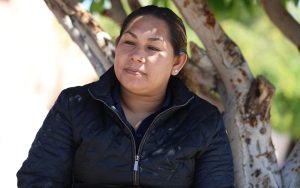
Solangel Cruz’s son had a bad case of bronchitis caused, in part, from the dust from the Salton Sea. (Photo by Jack Orleans/Cronkite News)
The UC Riverside study showed that when dust from the dried-up seabed is blown by the wind and inhaled, it activates immune responses in nearby residents.
“One of the concerns that the community faces around the lagoon is allergies, asthma, respiratory problems, eye problems and nosebleeds,” said María Pozar, an area resident who goes by Conchita and was one of the lead researchers of the UC Riverside study.
The Salton Sea, California’s largest lake, is drying at a rate of 1.3 million acre feet per year. A study from the University of California, Agriculture and Natural Resources tracked the deterioration of the sea and surrounding ecosystem and determined that in addition to evaporation, a lot of water has been diverted to urban areas since 2018. Because of that, the salinity of the water and toxic materials in it have been concentrated in the dust, making it dangerous.
“Waste from the water, toxic water, entered here,” Pozar said.
The Salton Sea formed in 1905 when the Colorado River, itself a river with high salinity, burst an irrigation canal gate and flooded the area; the lagoon almost had the same salinity as the ocean. It was an important site for fish that tolerate high salinity and it was also an important feeding ground for birds.

Conchita Pozar works with a research project of the University of California, Riverside, and provides care for residents through the Coachella Valley Free Clinic. (Photo by Jack Orleans/Cronkite News)
In the 1950s, the Salton Sea was a tourist destination with seaside resorts, marinas and yacht clubs, and it drew both vacationers and entertainers and celebrities. However, there were environmental concerns by the end of the 1960s.
In the 1970s, tropical storms and floods damaged tourist areas. In addition, the salt from nearby agricultural sites mixed with irrigation water from the Colorado River. The lagoon started receding as it dried. The fish that the birds depended on either died from increasing salinity or predation from tilapia, according to the University of California, Agriculture and Natural Resources. In the end, only tilapia remained. Today, the dust comes from the dried seabed which includes decimated fish remains.
According to Pozar, other problems include illegal dumping and a lack of trees and plants that could help trap the dust before it reaches the community.
The respiratory problems persist, but the immigrant community lacks access to health services that could help.
“It’s a very large immigrant population, their familiarity with health care systems is usually the Mexican health care system, which is a very different way about accessing health care,” said Ann Cheney, lead researcher of the UC Riverside study, and a medical anthropologist in the Department of Social Medicine, Population and Public Health at the University of California, Riverside.

Ann Cheney, a research scientist for the University of California, Riverside, helps provide care for residents through the Coachella Valley Free Clinic. (Photo by Jack Orleans/Cronkite News)
Cheney also said that sometimes parents prefer to take their children to Mexico for treatment, if they can cross the border, instead of to doctors in the U.S. Undocumented people aren’t eligible for Medicaid, the Affordable Care Act’s health insurance marketplace or other forms of public health insurance, according to the Substance Abuse and Mental Health Services Administration.
In addition, 30% of farm workers live below the federal poverty line, and 65% lack health insurance, according to the Center for Budget and Policy Priorities.
“There’s a fear that providers are going to ask for a form of identification or are going to ask for insurance coverage,” Cheney said.
Cheney and Pozar said that the mission of the Coachella Valley Free Clinic, operated by the university and led by Pozar, is to go into the immigrant community and provide treatment for the people who need it.
“As a mother, I give myself the obligation to be able to advocate, to be able to do the research that can lead them to a good place,” Pozar said.

